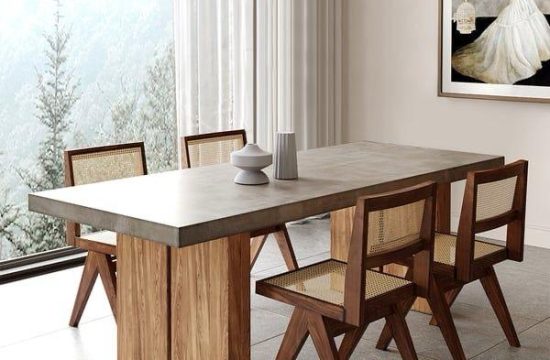By Ralph and Terry Kovel
The front porch is coming back. In the early 1900s, houses were built with a front porch so the family could sit and talk to the neighbors walking by.
Today, restored old houses and new houses in small community settings are again featuring a front porch. The porch needs special furniture, perhaps a swing or glider and other chairs, all made of weather-resistant material.
The Howell Manufacturing Co. of St. Charles, Ill., hired a German designer in the 1930s to create a modern line of outdoor furniture. The chairs were steel and had a spring to make a comfortable seat. There were chairs, loungers, gliders, rockers and tables. The gliders had upholstered seats and backs or fitted cushions. The other chairs were colored with a baked-on enamel.
About 10 years ago, several dealers began to go through old sections of big American cities buying the old metal furniture still being used on front porches. They offered the furniture at flea markets or stripped the old paint and powder-coated the pieces, giving them a permanent finish.
One very popular style, the pinwheel spring steel chair, is said to have originated in 19th century France. A pair of these chairs in very good condition auctioned recently for $575.
Q: I have been searching for someone to tell me who made my lamb cookie jar. The only mark on the 13-inch jar is “USA.” The lamb, sitting on his hindquarters, is beige with pink accents on his cheeks and ears. The lid is his hat, which is yellow and shaped like an upside-down flower. There’s a brown collar around his neck, and his hooves are black. The jar belonged to my mother, who bought it in North Carolina in the late 1950s or early ’60s. Can you help?
A: Your cookie jar was made by American Bisque Co. of Williamstown, W.Va. Unfortunately for collectors, the company marked most of its jars the way yours is marked. American Bisque was founded in 1919 to make doll heads. It appears to have started making cookie jars in the late 1930s. Until the factory closed in 1983, it made more cookie jars than any American company other than, perhaps, McCoy. Your jar, if in excellent condition, could sell for about $150.
Q: In a 1972 newspaper column, the Kovels wrote about a pressed-glass covered jar with a figure of Jumbo the Elephant on the cover’s finial. You said it was made about 1884. I’m looking for information about this glass.
A: Showman P.T. Barnum bought a huge elephant from the London Zoo in 1882 and brought it to the United States for his circus. He named the 61/2 -ton animal — the largest in captivity — Jumbo. Jumbo-mania swept the country, and souvenirs of all sorts were made. Canton Glass Co. and Brilliant Glass Works of Ohio and Central Glass Co. of West Virginia were among the companies that made Jumbo pressed-glass pieces. Compotes, condiment sets, covered jars and other glass dishes in a Jumbo pattern were made in the 1880s. Jumbo’s time with Barnum was short. He was hit by a train and killed in 1885. He was stuffed and displayed at Tufts University outside of Boston until 1975, when he was destroyed in a fire. Jumbo became a symbol of Barnum’s circus, and his name continues to this day to refer to something very large, from jumbo boxes of popcorn to jumbo jets.
Q: I have my grandmother’s 18-by-9-inch hammered silver tray. It is marked “Farber & Shlevin, Hand Wrought, 1755.”
A: Farber & Shlevin was a 20th century maker of aluminum, sometimes called “the poor man’s silver.” Your tray is aluminum and probably dates from the 1930s or ’40s. Pieces that look hand-hammered, like yours, are the most popular with collectors. Your tray would sell for about $30.
The Kovels answer as many questions as possible through the column. The volume of mail makes personal answers or appraisals impossible. Write to Kovels, The Commercial Appeal, King Features Syndicate, 300 W. 57th St., 15th Floor, New York, NY 10019.












